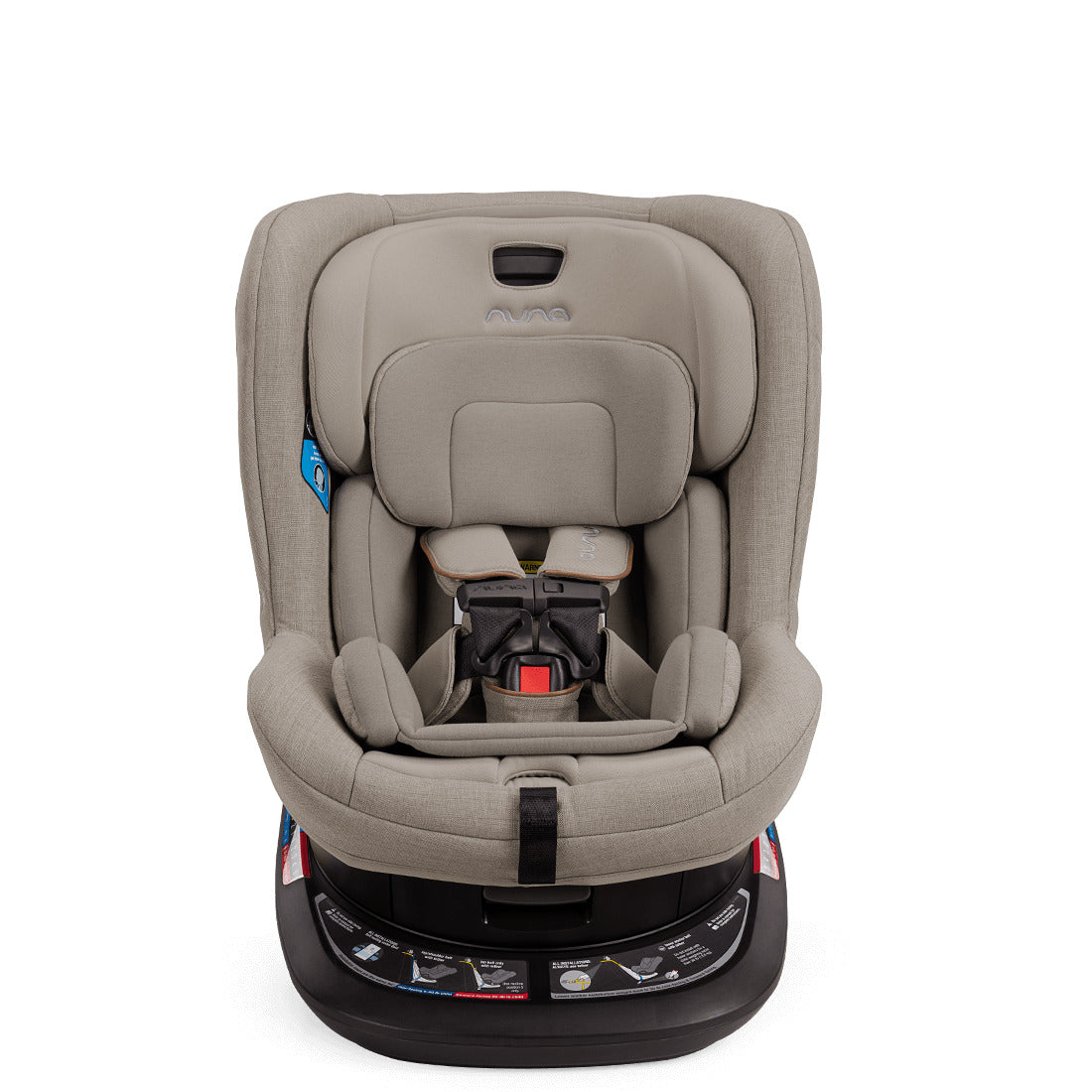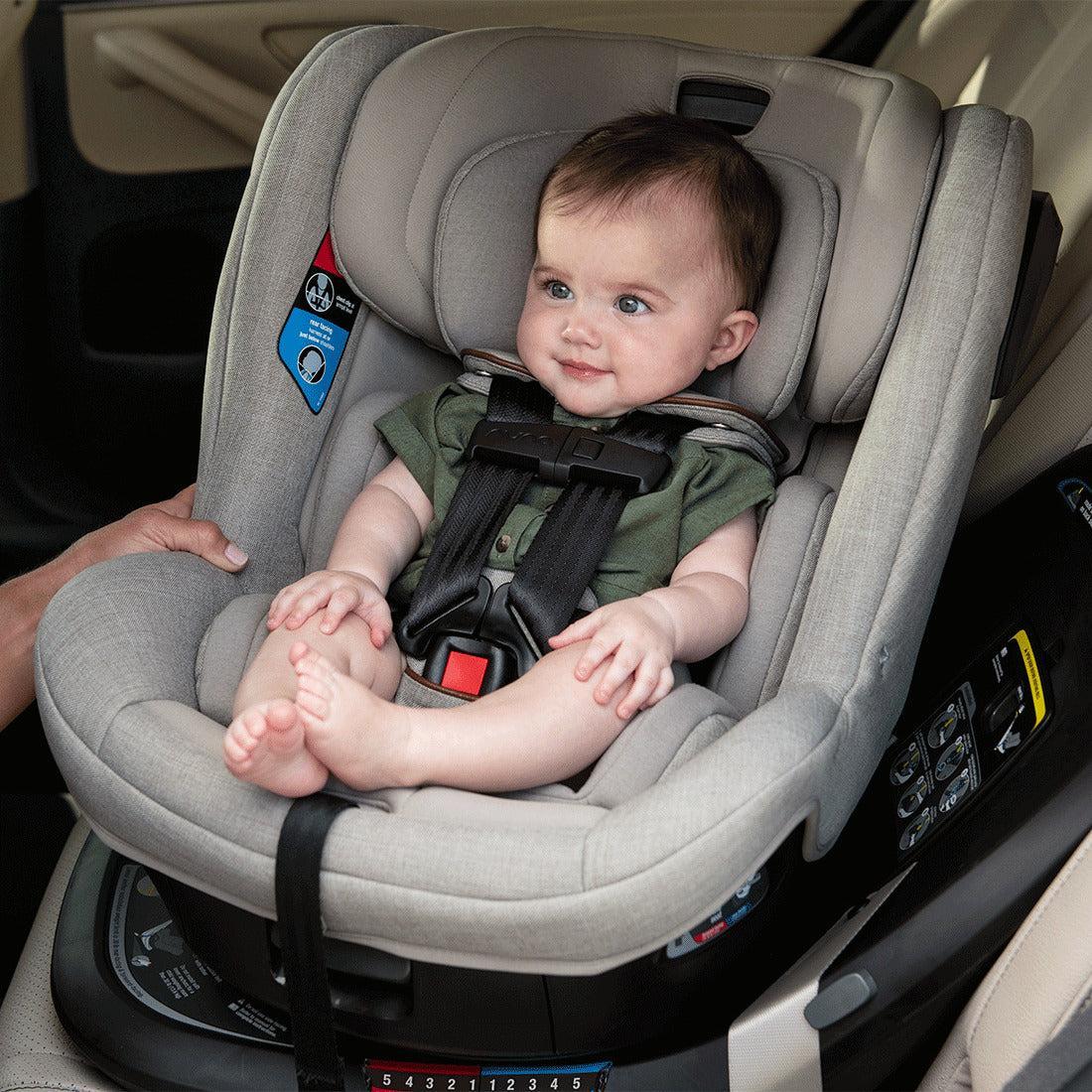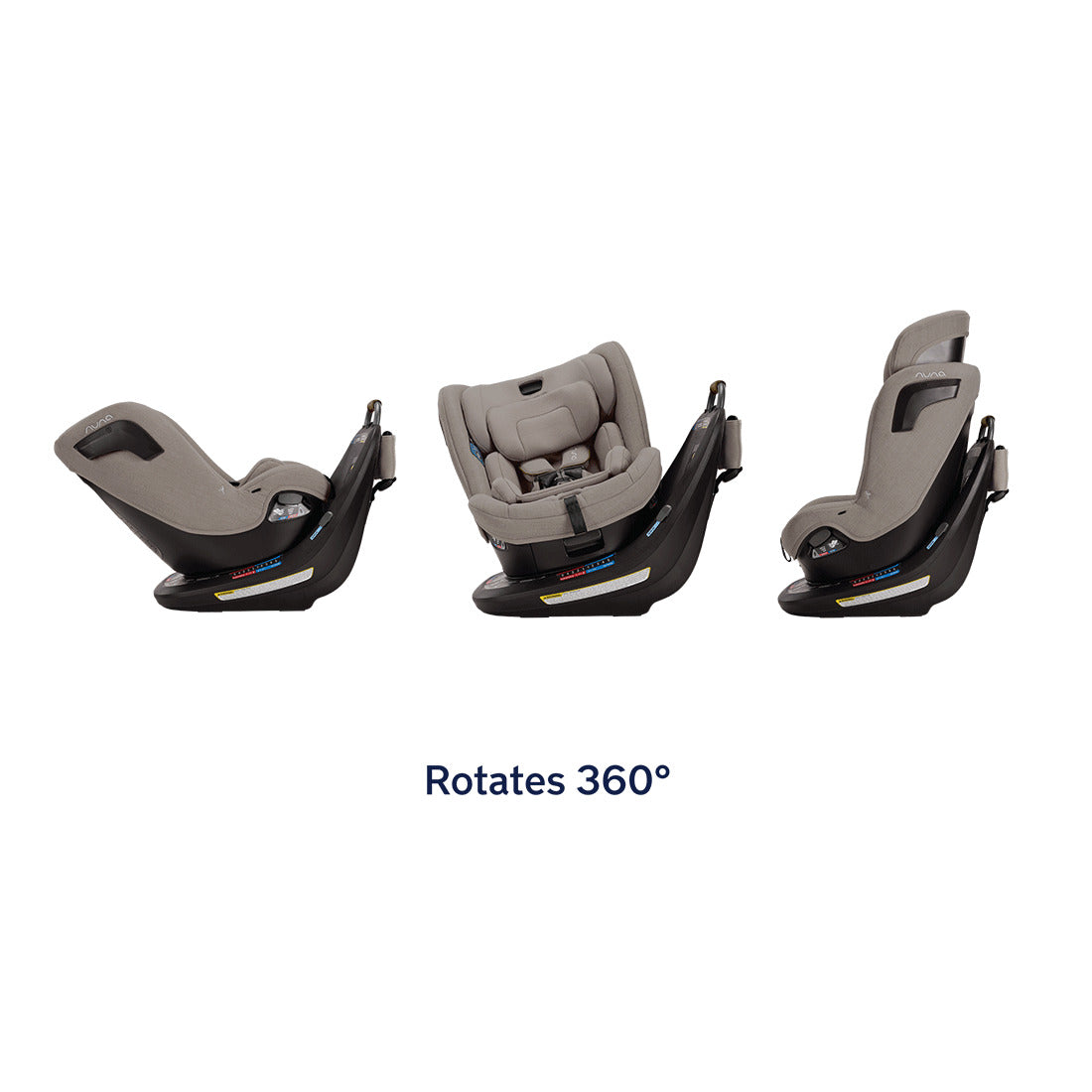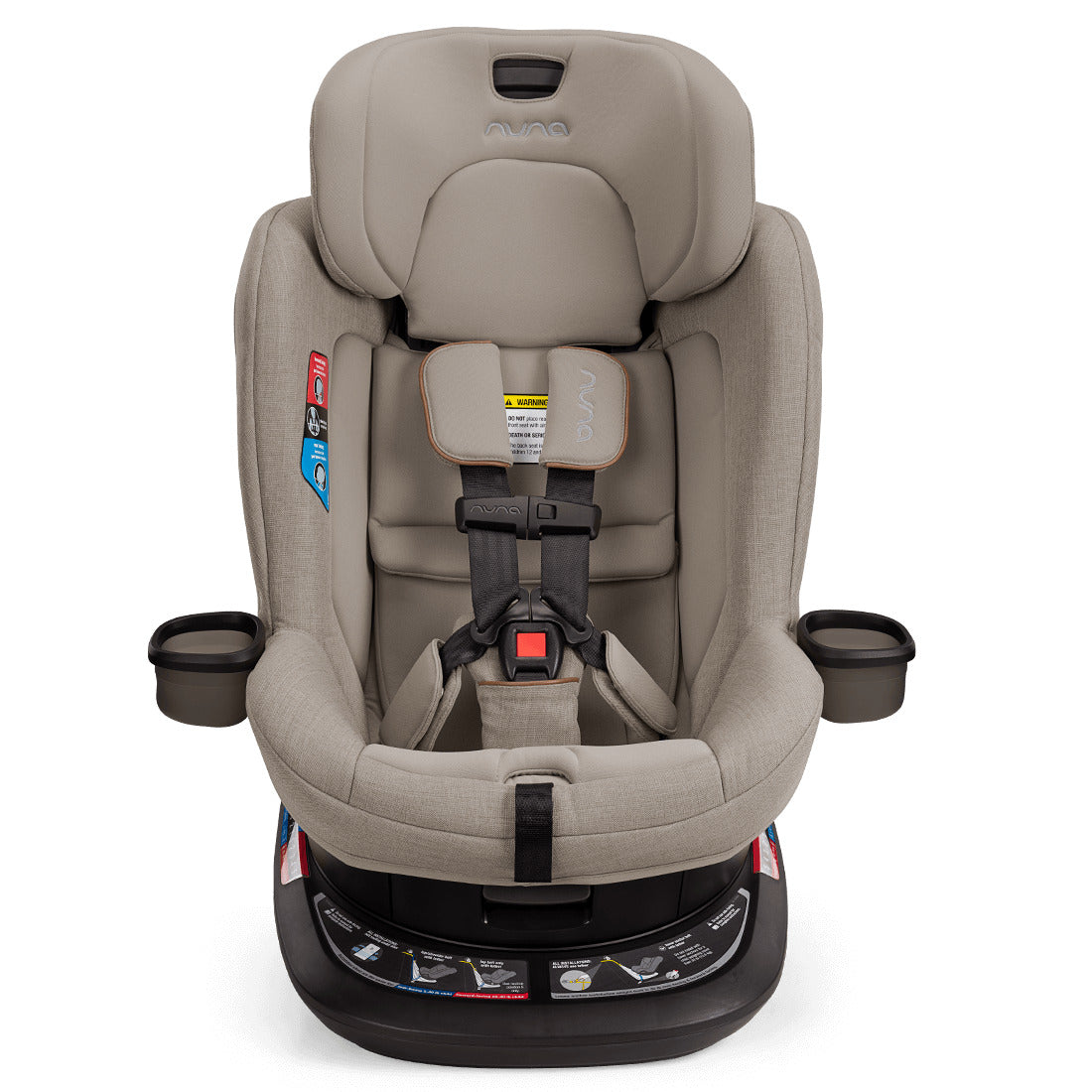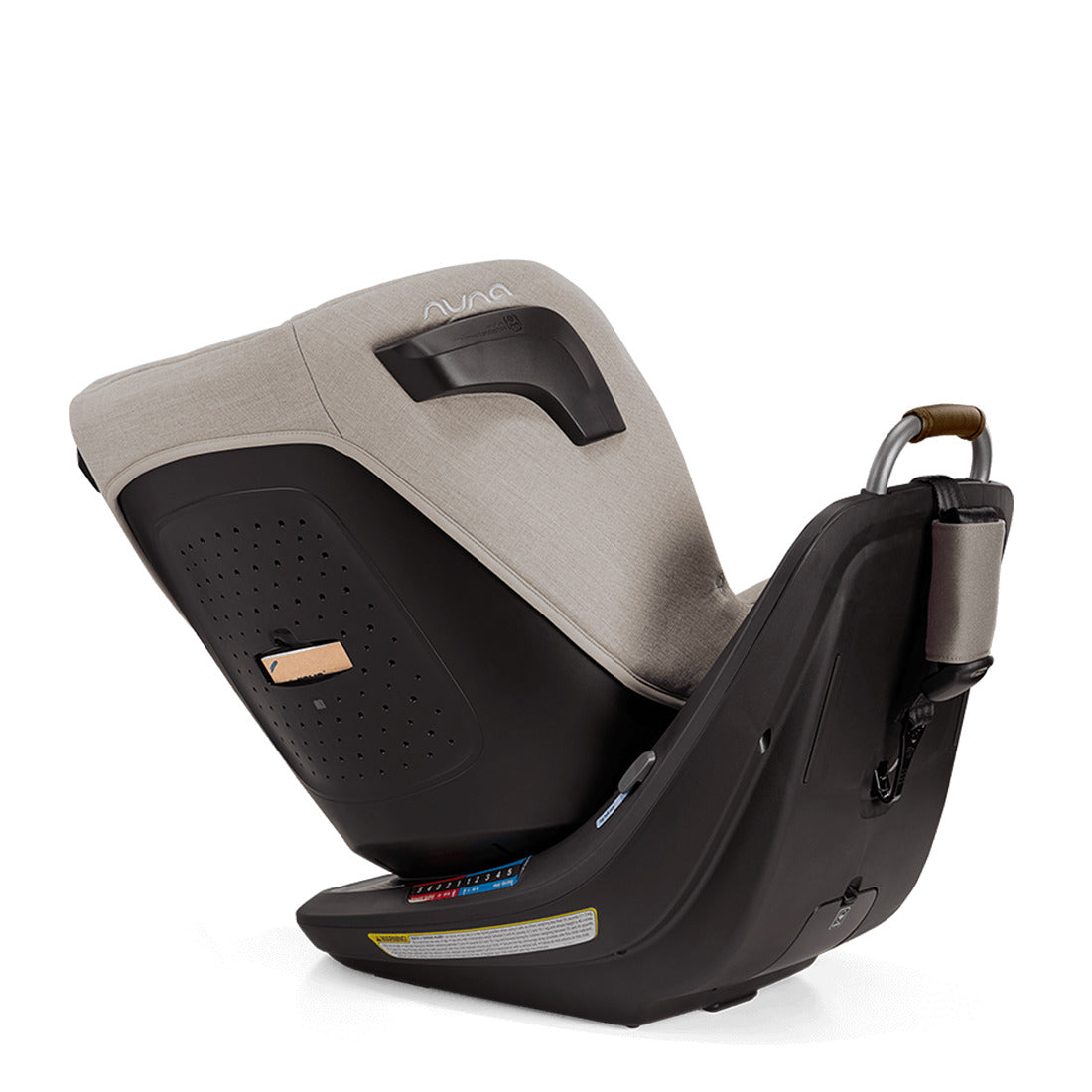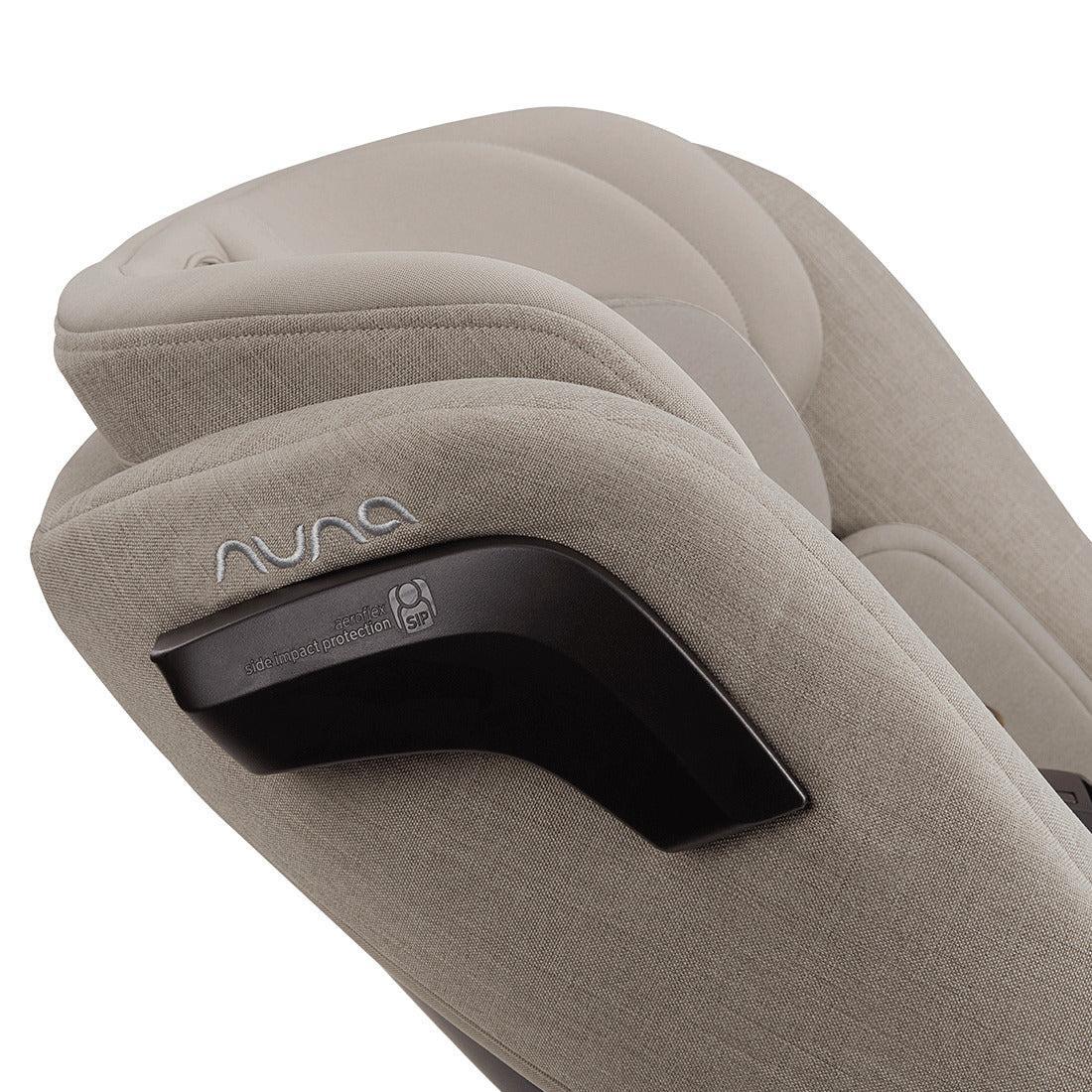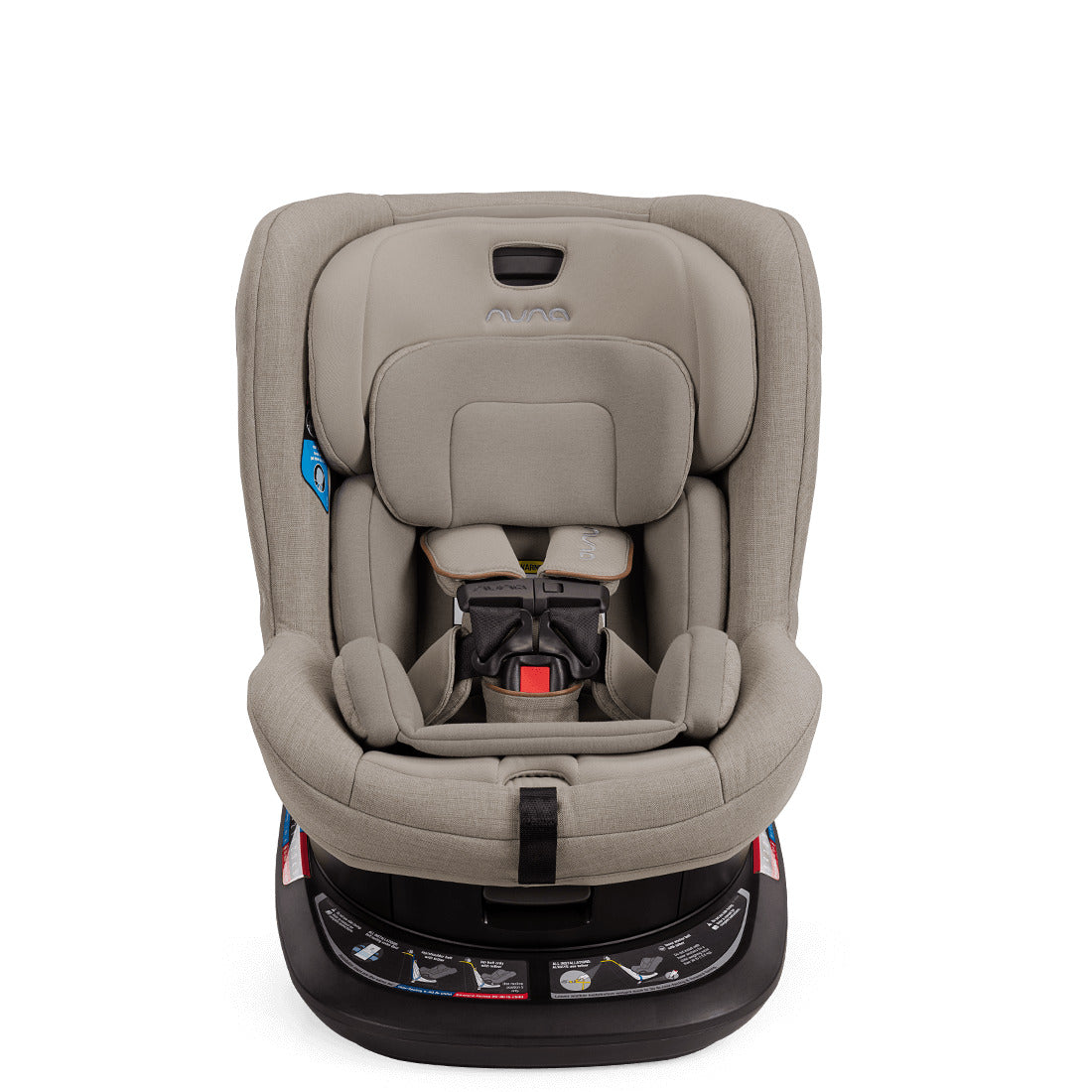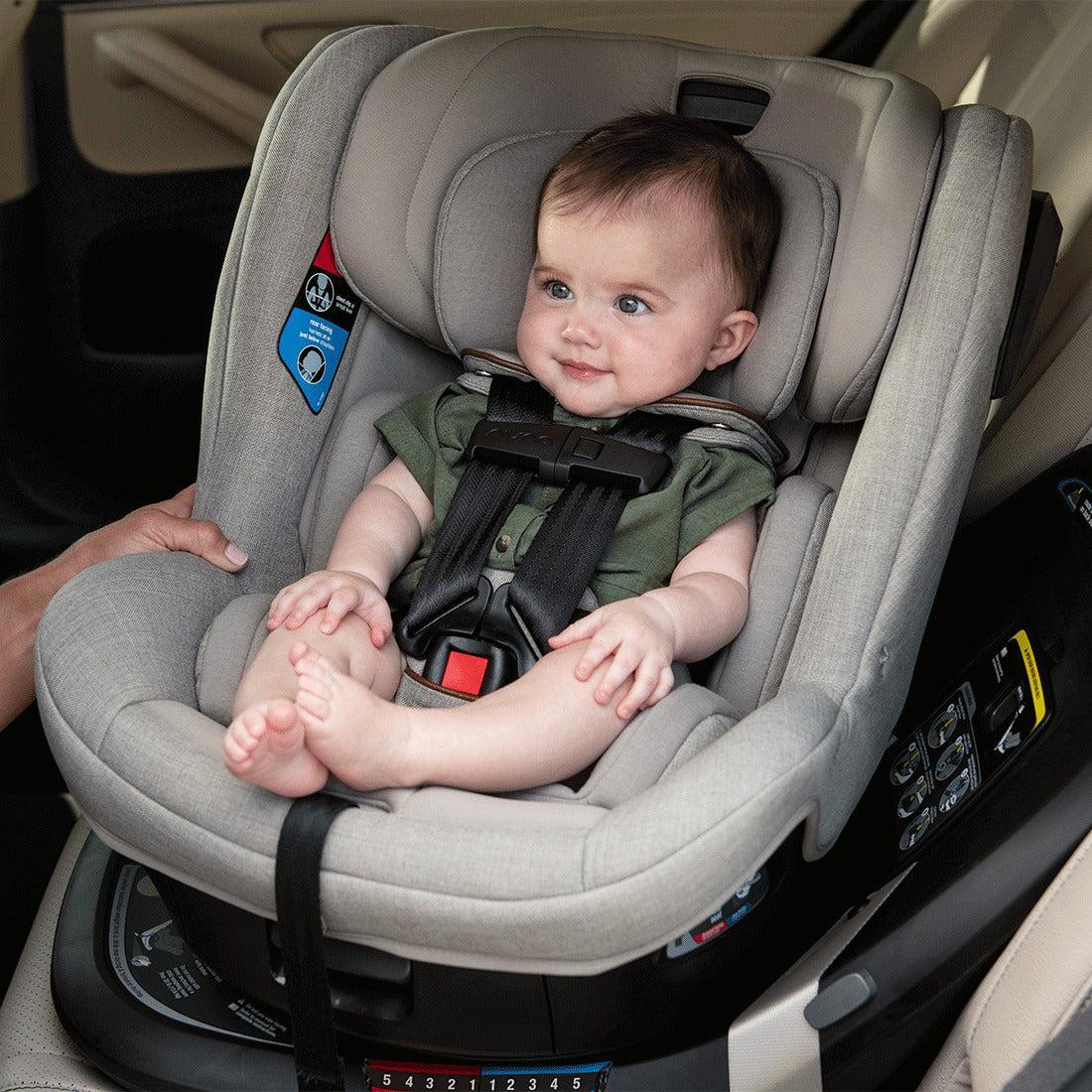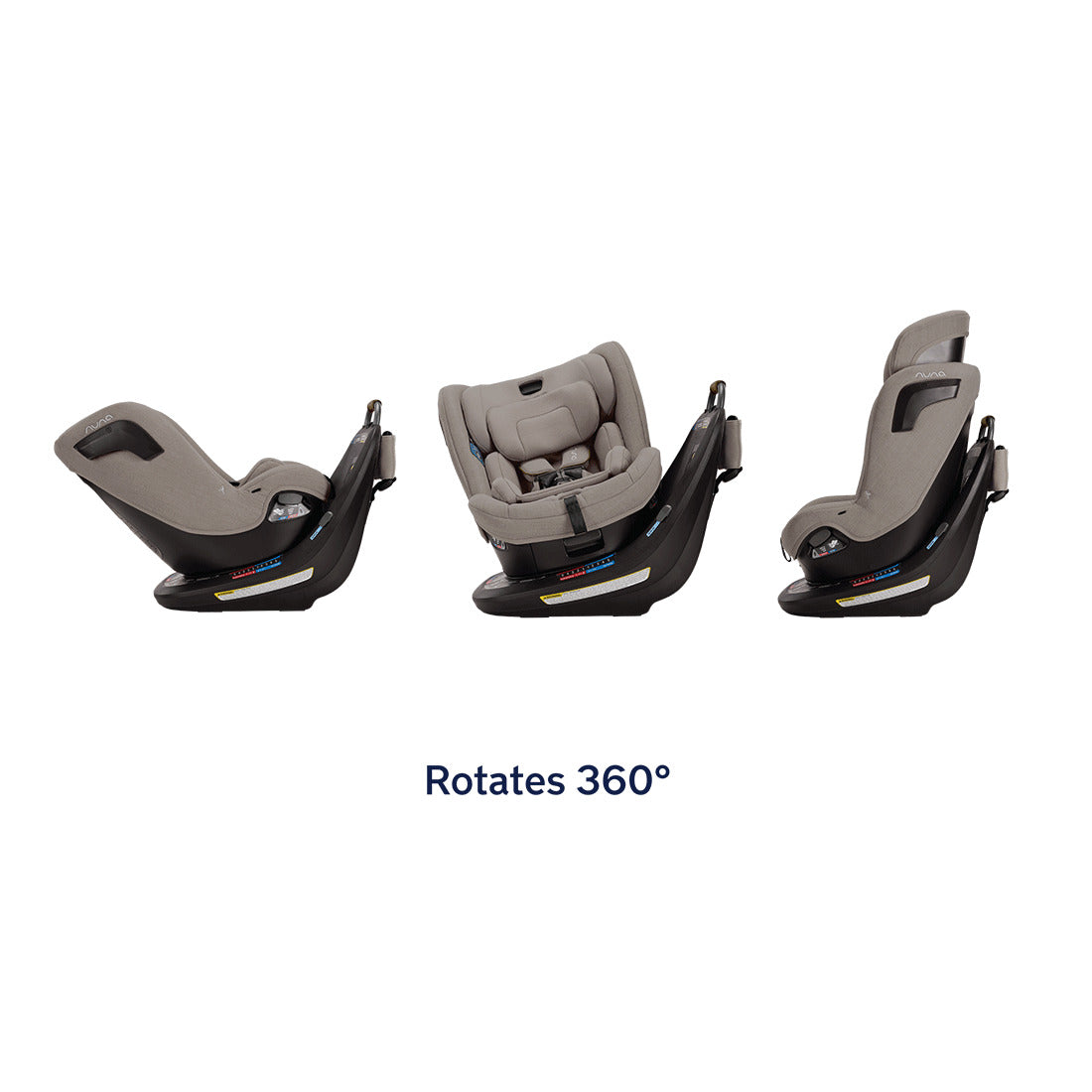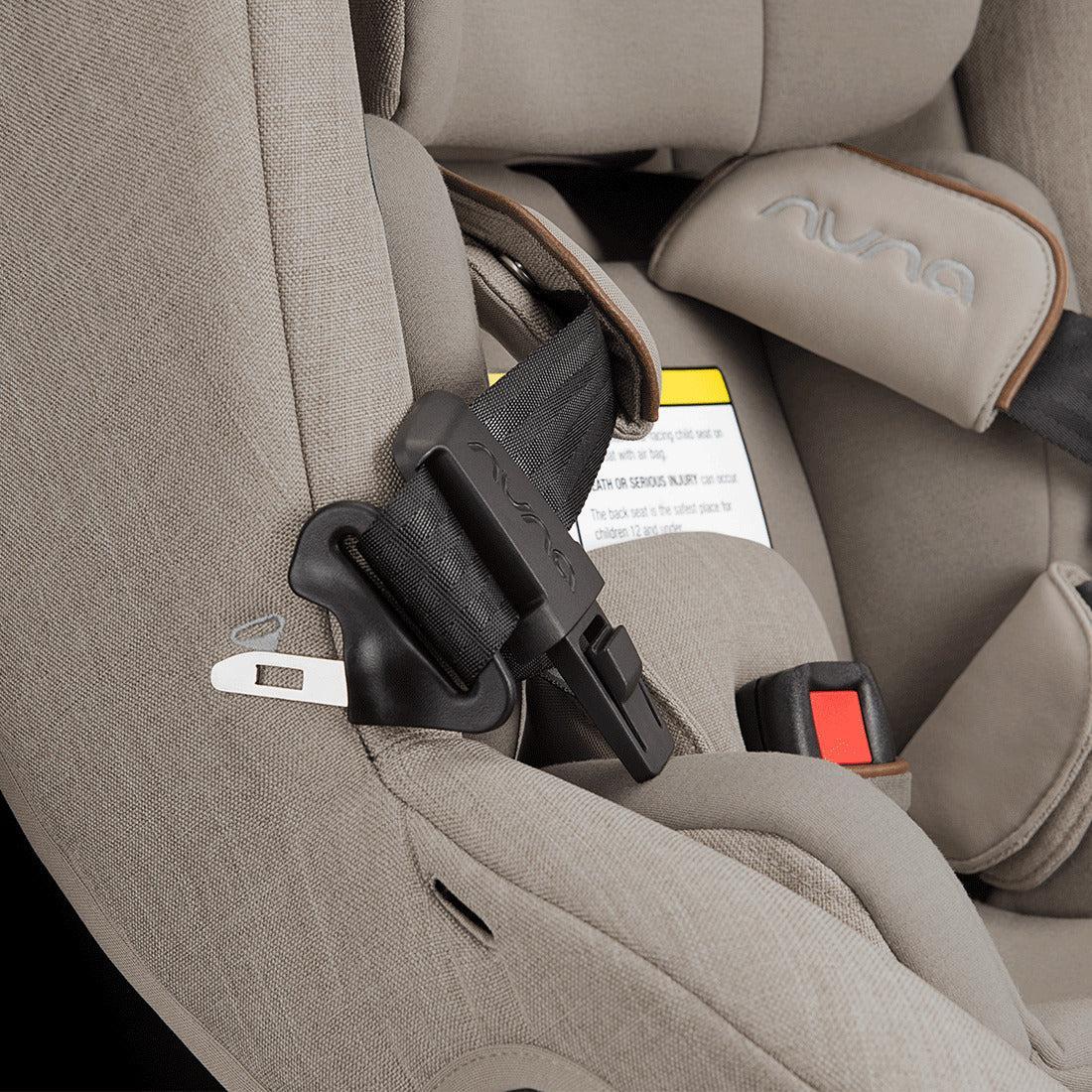Nuna Revv
Nuna Revv
SKU:NCS13602HAZ
Clothing Prem to 18 Months
| Size | Age Guide | Weight | Height |
|---|---|---|---|
| Premature | Premature or Small Newborn | Up to 4Kg | Up to 55cm |
| Newborn | 0-3 months | 4-6Kg | Up to 62cm |
| 3 Month | 3-6 months | 6-8Kg | Up to 68cm |
| 6 Month | 6-12 Month | 8-10Kg | Up to 76cm |
| 12 Month | 12-18 Month | 10-12Kg | Up to 84cm |
| 18 Month | 18-24 Month | 12-14Kg | Up to 92cm |
Clothing 2 to 6 Years
| Size | Age Guide | Height | Chest | Waist | Hip |
|---|---|---|---|---|---|
| 2 Year | 2-3 Years | Up to 100 cm | 56 | 51 | 58 |
| 3 Year | 3-4 Years | Up to 105 cm | 58 | 53 | 60 |
| 4 Year | 4-5 Years | Up to 110 cm | 60 | 55 | 62 |
| 5 Year | 5-6 Years | Up to 115 cm | 62 | 57 | 64 |
| 6 Year | 6-7 Years | Up to 120 cm | 64 | 59 | 66 |
Beanie Size Guide
| Size | Head Circumference | Age Guide |
|---|---|---|
| Premature | 31-35 cm | Premature or Small Newborn |
| Newborn | 35-40 cm | Newborn |
| Small | 40-43 cm | 3-6 Months |
| Medium | 43-47 cm | 6-18 Months |
| Large | 47-52 cm | 18-3 Years |
Sunhat Size Guide
| Size | Head Circumference | Age Guide |
|---|---|---|
| Newborn | 37-40 cm | Newborn |
| Small | 40-43 cm | 3-6 Months |
| Medium | 43-46 cm | 6-12 Months |
| Large | 46-49 cm | 12-24 Months |
| Xtra Large | 49-54 cm | 2-4 Years |
Sleep Pods Size Guide
| Size | Weight | Age Guide | Measurement(Back to Hem) |
|---|---|---|---|
| Newborn | 0-6 kgs | 0-3 Months | 60.5 cm |
| Small | 0-8 kgs | 3-6 Months | 66 cm |
Booties Size Guide
| Size | Age Guide |
|---|---|
| Newborn | 0-3 Months |
| Small | 3-6 Months |
| Medium | 6-12 Months |
| Large | 12-18 Months |
Pretty Brave Baby
| Foot Length (mm) | Insole Length (mm) | EU | UK | Age | INT |
|---|---|---|---|---|---|
| 95-104 | 110 | 16/17 | 2 | 0-6m | S |
| 104-114 | 118 | 18 | 3 | 6-12m | M |
| 114-123 | 127 | 19/20 | 4.5 | 12-18m | L |
| 123-137 | 142 | 21/22 | 5.5 | 16-22m | XL |
Pretty Brave 1st Walker
| Foot Length (mm) | Insole Length (mm) | EU | UK | Age |
|---|---|---|---|---|
| 114-120 | 125-128 | 19 | 3 | 1 yr |
| 120-126 | 132-135 | 20 | 3.5 | 1-2 yrs |
| 126-132 | 138.5-141.5 | 21 | 4.5 | 1-2 yrs |
| 132-138 | 145-148.5 | 22 | 5 | 2 yrs |
Crywolf Swim Nappy
| Size | Length (waist to crotch) | Crotch Width (side to side) |
|---|---|---|
| 0-1 yr | 1-2 yrs | |
| 37 | 38 | |
| 14.5 | 15.5 |
Crywolf Rash Suit
| Size | Length (back neck to crotch) | Chest (arm to arm) | Waist (side to side) | Sleeve (neck to cuff) | Neck Opening(diameter) |
|---|---|---|---|---|---|
| 6-12 Months | 1 yr | 2 yrs | 3 yrs | ||
| 40 | 42 | 44 | 46 | ||
| 25 | 26 | 27 | 28 | ||
| 24 | 25 | 26 | 27 | ||
| 30 | 31.5 | 33 | 34.5 | ||
| 13.25 | 13.25 | 13.8 | 14.3 |
In stock
Couldn't load pickup availability
Overview
Overview
The Nuna REVV rotating convertible car seat is ready to revolutionize your travel experience. One simple install then rotate the seat 360° effortlessly for a stress-free easy-in, easy-out between adventures. The REVV converts from a rear to forward-facing car seat as your little one grows from newborn up to 18kgs. The sleek lines provide a stylish look for you, while the luxurious fabrics and ventilation provide a comfortable ride for them. REVV provides security with Steel Strength Technology™, side impact protection, and a ten-position, bubble-free recline for snug and secure comfort. REVV is the stress-free rotating seat of your dreams.
What's Included
What's Included
Technical Specification
Technical Specification
User Guide
User Guide
Delivery and Returns
Delivery and Returns
- Delivery: Free within NZ on orders over $100 (excluding bulky items) or $8 standard shipping
- Returns: Accepted within 14 days of receipt with proof of purchase
- Some items are excluded from returns including sale items, hardware, car seats, prams, monitors and personal items - please click here for the full list.
Share this product
Recently Viewed Products
Related Blogs
Tips & Tricks - Cleaning your Carseat
How to Keep Your Car Seat Clean (and Looking Like New!) Parents and caregivers know that washing can quickly take over your life when you’ve got little ones around – especially when it comes to car seats! Kids, being kids, seem to have a knack for turning a spotless, brand-new car seat into a treasure trove of crumbs, spills, and, well, the occasional bodily fluid. While it would be ideal to ban all food and drink from the car seat (let's face it, that’s easier said than done!), prevention is key. A full-sleeved bib worn over the straps can help catch any messes before they even get the chance to make a mark. If a major mess happens (think: vomit, diaper leaks, or spilled drinks), the sooner you clean it up, the better. In between those big cleans, a quick vacuum once a week can keep things under control and prevent crumbs from piling up. For extra protection, consider using protective car seat covers or mats to catch any messes that could cause long-term damage to your car. Here are some simple steps to keep your car seat looking fresh and clean: 1. Vacuum Your Seat Give your seat a quick shake to loosen any crumbs or debris, then vacuum up the mess before removing the car seat for a deeper clean. This will stop any stray bits from making a mess as you go! 2. Remove and Wash the Car Seat Covers Start by checking your car seat’s instruction manual for cleaning guidelines. Many car seat covers are machine washable, but some may require hand washing. Be sure to note any special instructions about detergent, water temperature, or removable parts. Pro tip: Take a few photos or a video as you remove the covers. This can be a lifesaver when it's time to reassemble! A gentle, mild detergent or just soap and water are typically your best bet. Avoid bleach or harsh chemicals, as these can damage or weaken the fabric. When it comes to drying, line drying is your safest option, as most car seat covers can't go in the dryer. Give them plenty of time to air out and dry completely. 3. Clean the Harness & Straps Use a non-abrasive cloth and warm water to spot clean the harness and straps. Follow your manual’s instructions, as some manufacturers allow using soapy water, while others may not. 4. Clean the Buckles Buckles are critical for keeping your child safe, so avoid submerging them in water or using any lubricants. Instead, spot clean them with warm water and a soft cloth, keeping them free from soap or cleaning products. 5. Clean the Shell Vacuum the car seat shell to catch any loose bits, then use an old toothbrush or cotton bud to get into those tricky nooks and crannies. A damp cloth can help wipe down any sticky or dirty areas. Make sure the shell is fully dry before putting everything back together. 6. Reassemble Your Seat If you took photos or videos while disassembling, now is the time to refer back to them! Check your manual to ensure all parts are correctly reassembled, and give the harness and buckles a final check to ensure they’re securely fitted and ready for your little one. Note: This guide is intended to help with your car seat cleaning routine, but always follow the manufacturer’s specific instructions in your car seat manual to keep your warranty intact.
Learn moreHow to Store a Car Seat Between Children
As parents, we often find ourselves marvelling at how quickly our little ones grow. One day, they're nestled securely in their capsule and before we know it, they're moving on to a convertible car seat. If you're planning to store a capsule for a future sibling, you’ll want to ensure it remains in excellent condition, ready to protect your next bub. One of the main concerns during storage is preventing mould, which can be harmful to your baby's health and damaging to the car seat. Also, be aware that car seats do have an expiration date. Check this before packing the seat away. Here are some storage tips to help keep a capsule clean and mould-free: 1. First Step - Clean Thoroughly Before you even think about storing the car seat, it’s crucial to clean it thoroughly. Mould thrives in dirty, damp environments, so you want to ensure the seat is as clean as possible. Remove Fabric Covers : Start by removing any fabric covers, cushions, and padding that can be taken off. Many of these can be machine-washed. Check the manufacturer’s instructions for your seat. Wipe Down You can spot-clean your harness and straps with warm water and a non-abrasive cloth (ensure you follow your instruction manual for advice as some manufacturers allow the use of soapy warm water). Vacuum Pay close attention to crevices that can accumulate crumbs, sand and dirt. Dry Completely : After washing, make sure that every part of the seat is completely dry before storage. Leaving any moisture behind is an invitation for mould growth. Some drying time in the sun is great as ultraviolet light is a natural disinfectant. Read More about cleaning a car seat here. 2. Choose the Right Storage Environment Where you store the car seat is as important as how you clean it. Cool, Dry Place : The storage area should be cool and dry. Avoid basements, garages, or attics if they’re prone to humidity, which can encourage mould growth. A closet or spare room inside your home, where temperatures are more regulated, is ideal. Elevated Position : Store the car seat off the ground to avoid potential contact with dampness. Packaging : Seal the seat in a plastic bag and then in a cardboard box for protective storage. If you’ve kept the original box the seat came in, that’s ideal. Ensure you have all the pieces together including the manual, any infant inserts and even the car seat adapters for your stroller. However you may want to store the fabric covers separately in the linen cupboard if you have one. 3. Check Periodically It’s a good idea to regularly check on the car seat during storage to make sure there’s no exposure to damp or pests. 4. Pre-Use Inspection Before you use the car seat for your next child, inspect it thoroughly. Check for any signs of damage, mould, or mildew. Give it another clean if necessary, and ensure that all components are still in good working order. Final Thoughts Storing a capsule car seat between children can save you money and reduce waste, but it requires careful cleaning and storage to keep it in top condition. Don’t forget to get it out of storage and do that pre-use check nice and early so you have everything sorted well before the new bub arrives.
Learn moreHow to Choose a Car Seat
How to Choose the Right Car Seat – When You're Spoiled for Choice Choosing a car seat can feel overwhelming – especially when your baby’s safety, comfort, and your lifestyle are all at stake. With capsules, convertibles, boosters and everything in between, how do you know where to start? Here's a practical breakdown to help you compare the different types of car seats and figure out what’s right for your whānau. Capsule Car Seats Best for: Newborns to approx. 12 months (up to 13kg depending on the brand)What they are: Rear-facing, portable infant car seats that click in and out of your vehicle. Why parents love them: Can transfer a sleeping baby from car to stroller without waking them. Easy to carry with a handle. Most work with a base that stays in the car – simple click-and-go. Things to consider: You’ll likely only use it for the first year. Weight matters – some are much easier to carry than others. Great options to compare: Nuna Pipa Next – lightweight (only 2.8kg) and super portable. Nuna Arra Flex – features three recline positions - including a near-flat 157° recline on the stroller or when used as a carry seat. Cybex Cloud T – lies near-flat outside the car, great for stroller naps. Maxi Cosi Pebble 360 Pro – ergonomic recline, 360° base for easy loading. Nuna Pipa Urbn – ideal for city living or rideshares with built-in ISOFIX, no base required. Nuna Cari Next – a lie-flat carrycot that’s also a car seat – perfect for naps and spinal support. Convertible Car Seats Best for: Birth to approx. 4 years (or longer depending on the seat)What they are: Seats that start rear-facing and convert to forward-facing as your child grows. Why parents love them: Cost-effective – you’ll use it for several years. Often more spacious and padded than a capsule. Can remain rear-facing for longer, which is safest. Things to consider: Not portable – stays in the car. Check your car for what installation method you need (ISOFIX or seatbelt). Some have rotating bases to make buckling in easier. Great options to compare: Nuna Todl Next – works with a rotating base for easy access. Nuna Revv – built-in 360° rotation, no separate base required. Nuna Rava - seatbelt installed, and known for its simple installation, generous legroom, and plush comfort. Ideal for families who want a long-lasting seat without the need for a base or ISOFIX. Cybex Sirona T – comfortable, safe and easy to use with excellent recline and rotation. All-in-One (Convertible + Booster) Best for: Birth to approx. 11–12 yearsWhat they are: Car seats that transition from rear-facing to forward-facing to booster seat. Why parents love them: One purchase that lasts for years. Saves money in the long run. Ideal for parents who don’t want to keep upgrading. Things to consider: Not portable – stays in the car. No rotating options available. Great options to compare: Nuna Exec – rear-facing from birth, forward-facing to booster mode up to 148cm / 54kg. Britax One4Life Slim – rear-facing to booster mode up to 160cm / 54.4kg. Booster Seats Best for: 4+ years (or as per height and weight guidelines)What they are: Forward-facing seats that position the vehicle seatbelt properly across your child. Why parents love them: Simple to use and install. Gives older kids a good seat height and a view out the window. Often more compact. Things to consider: Only suitable once your child meets minimum size requirements. Great options to compare: Nuna AACE LX – adjustable height, recline, and side impact protection. Britax Skyline – affordable, comfortable, and lightweight. Maxi Cosi Titan Pro – grows with your child from toddler through to booster stage. Other Key Considerations Car fit: Not all seats fit all vehicles – check for compatibility, especially if fitting multiple seats. Ease of use: Consider rotating seats if you struggle with lifting your child in and out. Installation method: ISOFIX is quicker and easier, but seatbelt installs offer flexibility for older vehicles or travel. However ISOFIX does have lower weight restrictions (generally around 18kgs). If a seat allows for both ISOFIX and seatbelt installation it can pay to opt for Vehicle Seat Belt installation as it eliminates having to switch installation method once weight limits are reached. Longevity: Weigh up whether you want a dedicated seat for each stage or one that adapts as your child grows. Need Help Choosing? Our certified car seat technicians are here to help you make the best choice for your family. Visit a Dimples store and get personalised advice, try seats in your car, and enjoy our free professional car seat fitting with purchase. You can also take our handy quiz to find out what might work best for you here Whichever seat you choose, safety and comfort come first – and we’re here to make sure you get both.Shop the full car seat range online or in-store today.
Learn moreChoosing the right baby carrier
Here’s everything you need to know about baby carriers Becoming a new parent comes with an overwhelming number of unanswered questions – one of which is how to choose the right baby carrier. Keeping your little bundle of joy close to you while running errands, visiting the grandparents or doing chores around the house might seem like a far-fetched idea at first, but with a baby carrier, you don’t have to choose between doing one or the other. There is a huge selection of baby carriers to choose from – everything from smaller models best suited to newborn babies through to adaptable carriers which can be used even into the toddler years. With so many options, it can make deciding on which one to buy a little daunting – especially if you’re a first-time parent. Let’s take a look at different styles of carriers, as well as a few tips for how to pick the right one for you and your baby. Types of baby carriers Ring slings Ring slings are a well-known and versatile style of baby carrier. They’re made from a length of fabric threaded through two rings. Ring slings are worn on one shoulder, spreading widely across your back to create a pouch for baby to sit in. With some models, extra shoulder padding can be added for long-term wearing. Because a ring sling offers a variety of different carrying positions, it can be used from newborn through to toddlerhood. For young babies, it supports the ‘C-shape’ curve they’re born with. Once the sling has been adjusted to fit you and bubs, it’s a simple matter of popping baby in and out. Ring slings are a great introductory carrier for new parents because they’re easy to use and can be stored in your nappy bag. Soft-structured carriers This style of carrier is a favourite with parents because of how easy it is to use and adjust. The basic design is a front panel where baby will be ‘seated’, a waist strap and two padded shoulder straps – all of which can be adjusted and secured with buckles to achieve a comfortable fit. Soft-structured carriers can be used for front, hip and back carrying, from newborns to toddlers. They carry your baby in an ergonomic upright position (rather than a hammock or cradle position), evenly distributing his weight over both your shoulders. Many have additional head support for younger babies or integrated infant boosters which can be easily removed as your baby grows – like this Nuna Cudl Carrier. They’re not quite as snuggly as wraps and can take time to work out the most comfortable position, but they’re super-quick to pop on and provide fantastic support for long-term wearing. Wrap slings or carriers A wrap – like this Aura Baby Wrap – is one of the most comfortable baby carriers to wear. For young babies, the swaddle-like design mimics the feel of the womb. The design consists of a long piece of specially-woven fabric that is wrapped, tied and moulded to your body and baby. You can use it in lots of different styles – front, side or back, on one shoulder or two. Some wrap snugly around your chest to distribute weight and others are more like a backpack. Most will fit all sizes, shapes and ages of babes. You’ll need to learn how to wrap, but with a little practice and patience, you’ll have it mastered in no time. Tips for choosing a baby carrier Baby carriers come in a wide variety of styles and features. Whatever carrier you choose, follow the usage instructions and safety advice in the manual, and always monitor baby when in the carrier to ensure proper airflow is maintained. When shopping for a baby carrier, here are some things you should consider: Longevity As your baby grows, your carrier will need changing features. Newborns like to snuggle in close with their head on your chest; toddlers want to see the world! Most carriers come with generous age and size ranges but it's essential to choose a carrier designed to fit your baby's size and age. Some parents opt for two carriers and others look for an alternative that can adjust to different ages. Fit and comfort One of the most important factors of a baby carrier is how well it fits. You want one that fits your newborn well and supports her safely. This means you’ll need to factor in weight, height, physiology and build. It should also be comfortable for both you and your baby. The seat of any carrier should allow your baby’s legs to be in the hip-healthy ‘M’ position. For you, think about how much back and shoulder support you’ll need for long-term wearing comfort. Most carriers are one-size-fits-most, can be easily adjusted and shared between parents. Other options come in different size ranges. Ease of use Regardless of what type of carrier you buy, it may take a little practice before using one becomes second nature. Some carriers require a multi-step process to get set up but can be easily stored in a nappy bag. Others may be easier to use but bulkier to transport. Easy to clean If you didn’t already know – babies are messy! Not all carriers can be machine-washed for easy cleaning – some need to be hand-washed or dry-cleaned. Be sure to check labels for washing instructions. Climate While physical contact is great for a boost of oxytocin (the love hormone) and bonding, all carriers will add heat. For warmer climates, lightweight and breathable fabrics are essential. For colder climates, heavier materials and padding are more appropriate. Organic and eco-friendly For those parents and babies with sensitive skin, or anyone looking for an eco-friendly carrier option, consider carriers with organic fabrics, colour grown cotton, unbleached fabrics, recycled materials, and non-toxic dyeing processes. Pick what’s right for you and your family Baby carriers are a great alternative to lugging a stroller in and out of your boot and navigating crowds. They’ve been shown to help promote bonding, improve postpartum depression and anxiety, and reduce crying. But ultimately, the perfect carrier for you and your bouncing baby is the style that you both find most comfortable. All carriers provide exactly what your baby is looking for – being close to you. Look at your budget, lifestyle, and who will be using the carrier to help you decide which styles to consider.
Learn more

